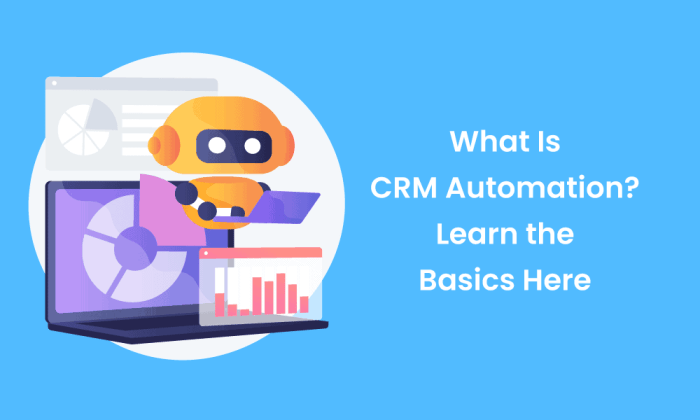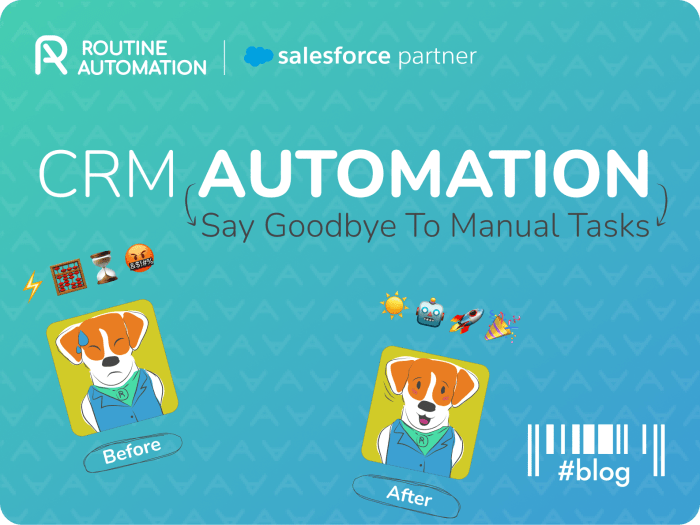CRM and business automation are revolutionizing how organizations interact with their customers and streamline operations. In today’s fast-paced digital landscape, businesses are leveraging Customer Relationship Management systems not only to manage customer data but also to enhance overall productivity through automation. By integrating CRM with various business tools, companies can create a cohesive workflow that not only saves time but also fosters stronger relationships with clients.
As automation takes center stage, understanding the key features and functionalities of CRM systems becomes crucial. From operational to analytical and collaborative CRM, each type offers unique benefits that can significantly impact efficiency and customer satisfaction. This exploration into CRM and business automation will uncover the myriad advantages, best practices, and future trends shaping this dynamic field.
Overview of CRM and Business Automation
In the rapidly evolving landscape of business, Customer Relationship Management (CRM) and business automation play pivotal roles in driving efficiency and enhancing customer experiences. CRM refers to the strategies and technologies that companies use to manage their interactions with current and potential customers, while business automation encompasses the processes that streamline operations. Together, they create a synergy that maximizes productivity and fosters better relationships with customers.
CRM systems are designed to collect, analyze, and manage customer data, allowing businesses to understand client needs and preferences better. Key features of CRM systems that facilitate business automation include contact management, sales tracking, task automation, and analytics. Furthermore, CRM integrates with various automation tools, such as marketing automation software and customer service platforms, enhancing the overall efficiency of business processes.
Benefits of Implementing CRM and Business Automation
Implementing CRM and business automation yields numerous advantages that can significantly enhance organizational performance. Among the key benefits are:
- Streamlined Business Processes: CRM systems help eliminate redundant tasks by automating workflows, allowing teams to focus on core activities.
- Improved Customer Engagement: Automation facilitates timely and personalized communication with customers, enhancing their overall experience.
- Data-Driven Insights: Analyzing customer data through CRM systems enables businesses to make informed decisions and tailor their offerings.
Successful CRM implementations can lead to remarkable improvements in business automation. For instance, a retail company that adopted a CRM solution integrated with an inventory management system saw a 30% reduction in order processing time, significantly enhancing customer satisfaction and operational efficiency.
Types of CRM Systems, CRM and business automation
CRM systems can be categorized into three main types, each serving distinct purposes in the realm of business automation:
- Operational CRM: Focuses on automating customer-facing processes, including sales, marketing, and customer service.
- Analytical CRM: Emphasizes data analysis to improve decision-making and customer insights.
- Collaborative CRM: Facilitates communication and collaboration among different departments to enhance customer interactions.
| CRM Type | Key Features | Benefits |
|---|---|---|
| Operational CRM | Sales automation, marketing automation, customer service tools | Increased efficiency, improved customer satisfaction |
| Analytical CRM | Data mining, predictive analytics, reporting | Enhanced decision-making, better customer understanding |
| Collaborative CRM | Contact management, communication tools | Improved teamwork, streamlined communication |
Each type of CRM offers specific business automation capabilities that cater to different organizational needs, thereby enhancing overall operational effectiveness.
Best Practices for CRM and Business Automation Integration

To effectively integrate CRM systems with existing business processes, businesses should follow systematic steps. These steps include:
- Assessing current processes and identifying automation opportunities.
- Choosing the right CRM platform that aligns with business goals.
- Training employees on new systems and procedures.
- Continuously monitoring performance and making adjustments as necessary.
During CRM implementation for automation, businesses can use a checklist to ensure all critical aspects are covered. This checklist should include:
- Define clear objectives for CRM usage.
- Ensure data integrity and consistency.
- Establish integration with existing software solutions.
- Plan for ongoing maintenance and support.
Several companies, such as HubSpot and Salesforce, have successfully integrated their CRM systems with automation tools, resulting in streamlined operations and improved customer engagement.
Tools and Technologies in CRM and Business Automation

A variety of popular CRM platforms are available, each offering unique functionalities for business automation. Notable examples include:
- Salesforce: Renowned for its comprehensive features, including sales automation and customer insights.
- HubSpot: Offers marketing automation tools integrated with CRM functionalities.
- Zoho CRM: Provides customizable solutions for various business sizes with automation capabilities.
| CRM Tool | Automation Features |
|---|---|
| Salesforce | Lead scoring, automated workflows, reporting |
| HubSpot | Email marketing automation, social media scheduling |
| Zoho CRM | Custom workflows, AI-driven analytics |
Artificial intelligence (AI) plays a significant role in enhancing CRM and business automation. AI-powered tools can analyze vast amounts of customer data, predict trends, and personalize the customer experience effectively.
Challenges in CRM and Business Automation
Despite the numerous benefits, businesses often face challenges when implementing CRM and automation. Common obstacles include:
- Resistance to change from employees.
- Data quality issues, leading to poor insights.
- Lack of integration with existing systems.
To overcome these challenges, organizations can adopt strategies such as:
- Providing comprehensive training programs to facilitate smooth transitions.
- Establishing clear communication about the benefits of CRM systems.
- Investing in data cleaning and management practices.
Training and ongoing support are vital for the successful adoption of CRM systems, ensuring that employees feel confident in utilizing new technologies.
Future Trends in CRM and Business Automation
Emerging technologies are poised to shape the future of CRM and business automation significantly. Innovations such as machine learning, advanced analytics, and chatbots are already changing how businesses interact with customers.
The impact of customer data analytics will continue to grow, enabling organizations to develop more personalized marketing strategies based on consumer behavior. For example, companies leveraging predictive analytics can anticipate customer needs and tailor their services accordingly.
As businesses adapt to these trends, it is predicted that CRM systems will become increasingly integrated with other business automation technologies, driving further growth and efficiency.
Measuring Success in CRM and Business Automation

To gauge the effectiveness of CRM and automation efforts, businesses must track key performance indicators (KPIs). Important KPIs include:
- Customer satisfaction scores.
- Lead conversion rates.
- Return on investment for CRM initiatives.
Creating a framework for evaluating the success of CRM implementations can help businesses identify areas for improvement. This evaluation process should involve regular assessments of performance metrics and strategic adjustments based on the findings.
By focusing on these aspects, organizations can enhance their CRM and business automation strategies, leading to improved customer relationships and operational efficiency.
Ultimate Conclusion: CRM And Business Automation
In conclusion, the synergy between CRM and business automation is paving the way for businesses to thrive in an increasingly competitive environment. By embracing these technologies, companies can optimize their processes, enhance customer engagement, and ultimately drive growth. As we look to the future, staying attuned to emerging trends and continuously measuring success will be paramount for organizations aiming to leverage the full potential of CRM and business automation.